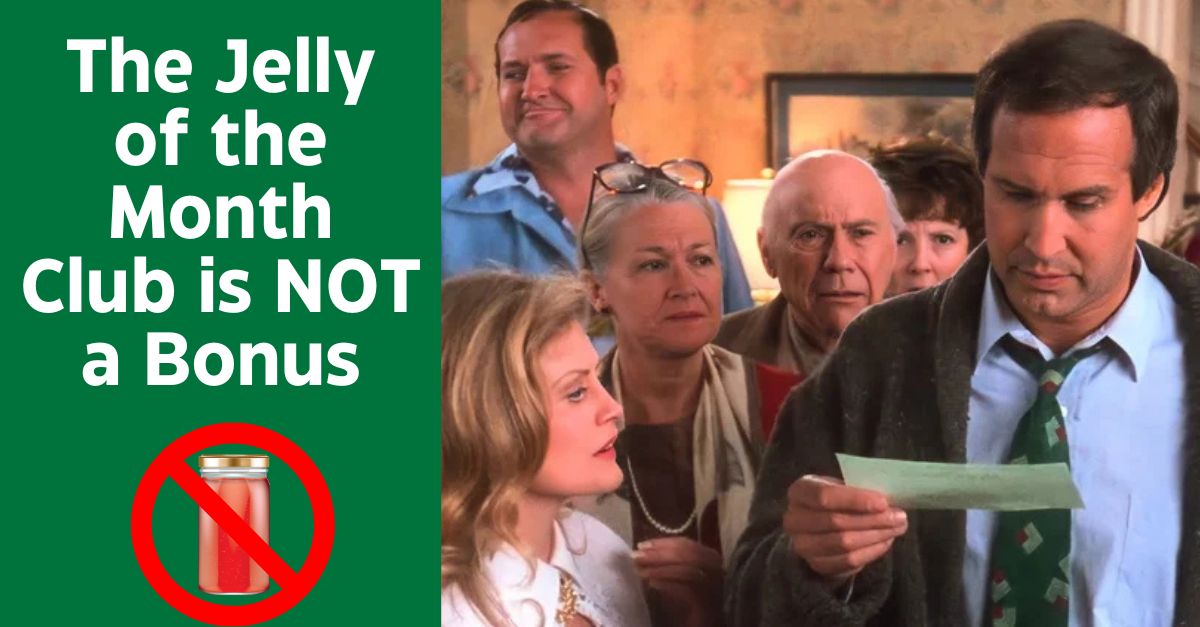
Christmas Vacation is a holiday classic, and for good reason. It’s filled with unforgettable scenes, but perhaps none are as hilariously heartbreaking as the moment Clark Griswold receives his long-awaited Christmas bonus. After weeks of anticipation, Clark dreams of a backyard pool for his family, only to unwrap… a subscription to the Jelly of the Month Club. Cue chaos, a memorable rant, and a not-so-subtle jab at lackluster employee recognition.
Clark gets Jelly of the Month Club- Watch the video here
This scene is iconic for its comedic brilliance, but it also strikes a chord about employee incentives. The disappointment Clark feels mirrors the sentiments of employees across many organizations. In an era where recognition and rewards are increasingly crucial, offering a “jelly of the month” equivalent can backfire.
According to research, lack of recognition is the number one reason employees leave their jobs, with 66% of workers stating they’d quit if they felt unappreciated. Yet, in my conversations with leaders, many companies are still struggling to design thoughtful, effective incentive programs that truly resonate with their teams.
So, how can companies avoid their own Jelly of the Month fiasco? Let’s break it down.
Avoiding Your Own Jelly of the Month Moment: Insights for Better Incentives
1. Every Incentive Tells a Story—Make Yours a Good One
As Adam Grant, an organizational psychologist, points out in a recent article, incentives send more than just financial messages—they shape relationships. He explains, “When we design rewards and punishments, we think a lot about the results we’re trying to motivate. We need to be at least as thoughtful about the relationships we’re trying to build.”
Incentives are a communication tool. A well-designed program says, “We value you and your contributions.” On the flip side, a poorly conceived one can say, “You’re an afterthought.” To get it right, align your incentives with your company’s values and culture while ensuring they reflect a genuine appreciation for employees’ efforts.
2. Not All Bonuses Are Green—Get Creative
Not every company can hand out hefty cash bonuses, but that doesn’t mean you’re stuck handing out jelly subscriptions. Creative, tailored incentives can go a long way.
Consider alternatives like:
- Travel perks: Offering flight miles or travel credits through partnerships.
- Point-based systems: Let employees earn points to redeem on curated products or experiences.
- Work-life balance benefits: Extra PTO days, flexible schedules, or wellness programs.
Whatever you do, make sure it’s something employees actually want. (Pro tip: Jelly of the Month Club isn’t it.)
3. Treat Incentives Like Experiments, Not Guarantees
Incentives don’t have to be perfect right out of the gate. In the article I mentioned previously, Adam Grant also suggests treating them as experiments: test, tweak, and repeat.
Too often, companies abandon an incentive program because it doesn’t yield immediate results. Instead, solicit feedback from employees, analyze what worked (and what didn’t), and adjust. Your team will appreciate the effort to continuously improve.
4. Surprise and Delight, Don’t Shock and Disappoint
Clark Griswold was surprised—just not in the way he’d hoped. Great incentives should exceed expectations and create a moment of delight. Think about the last time someone surprised you with a thoughtful gesture. It left a lasting impression, right? That’s the kind of reaction you want to create with your employees. You want employees to have a “wow” experience as much as possible… and not in a sarcastic way.
5. Don’t Forget the Unsung Heroes: Middle Managers
Middle managers often get overlooked in recognition programs, caught in the gap between senior leadership and frontline employees. Yet, they’re pivotal in maintaining company culture and driving day-to-day operations.
Research shows that 83% of senior managers view recognition as critical to their work satisfaction. Make sure incentives are distributed evenly across all levels of the organization—not just reserved for executives or entry-level team members.
6. Make It Personal (No, Really)
The best incentives are those that feel personal. Gallup’s research highlights that honest, authentic, and individualized recognition is the most effective. Instead of a generic gift or incentive, consider a personalized touch.
For instance, one of my former managers knew I was a diehard Indianapolis Colts fan. One holiday season, she gifted me a Colts hoodie—it was simple, but it showed she paid attention. That gesture stuck with me.
Encourage managers to get to know their teams and provide them with a small budget for personalized recognition. The impact of tailoring rewards to individual preferences far outweighs the effort.
Don’t Let Your Bonuses Be the Punchline
At the end of the day, employee incentives are about more than just tangible rewards—they’re about showing your team they’re valued and respected. So, let’s learn from Clark’s misfortune. By designing thoughtful, creative, and personal incentives, we can honor our employees in ways that inspire loyalty, build relationships, and maybe even create a little holiday magic of our own.
After all, no one wants to be remembered as the company that gave the Jelly of the Month Club.
By Kent Wilson
